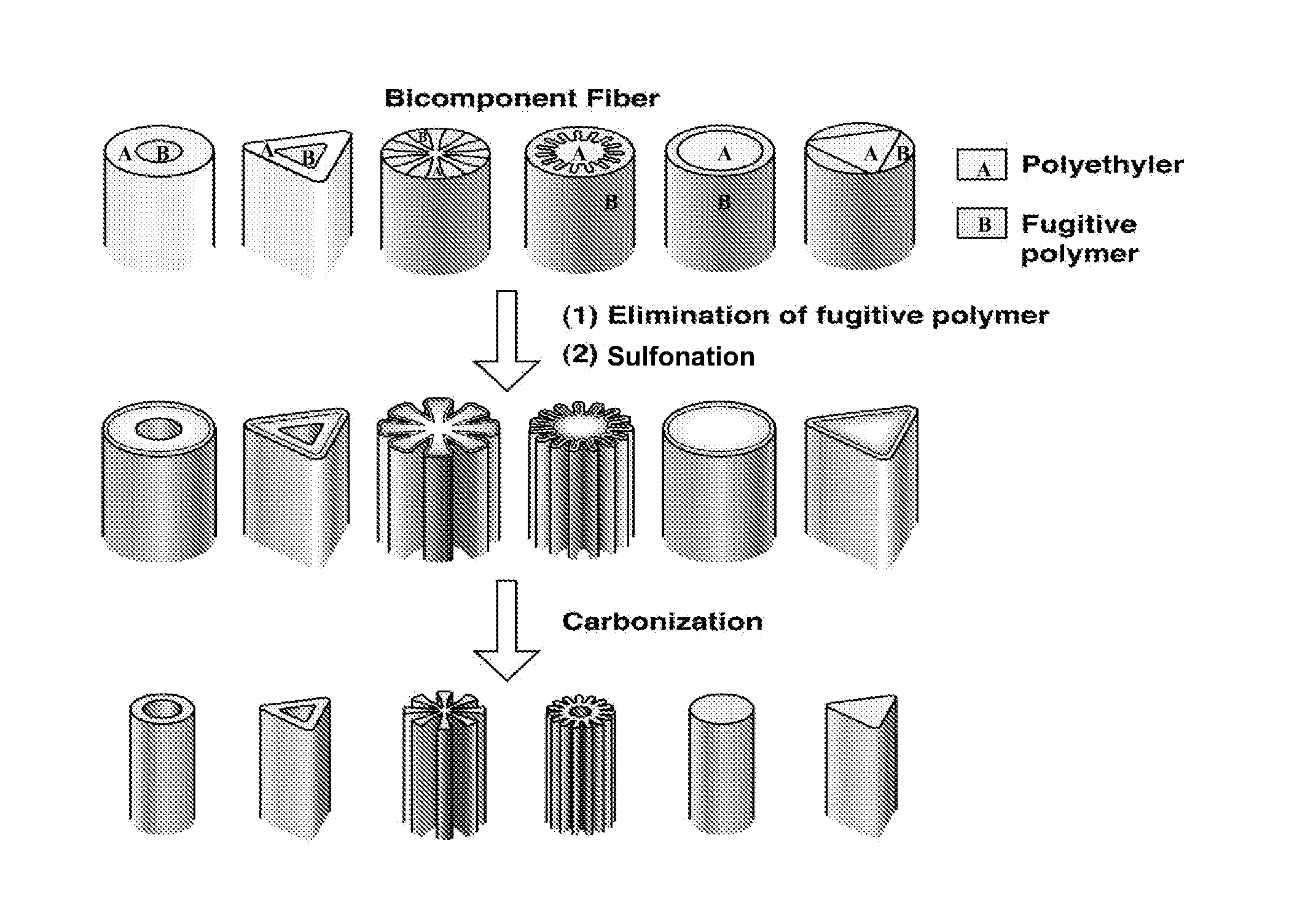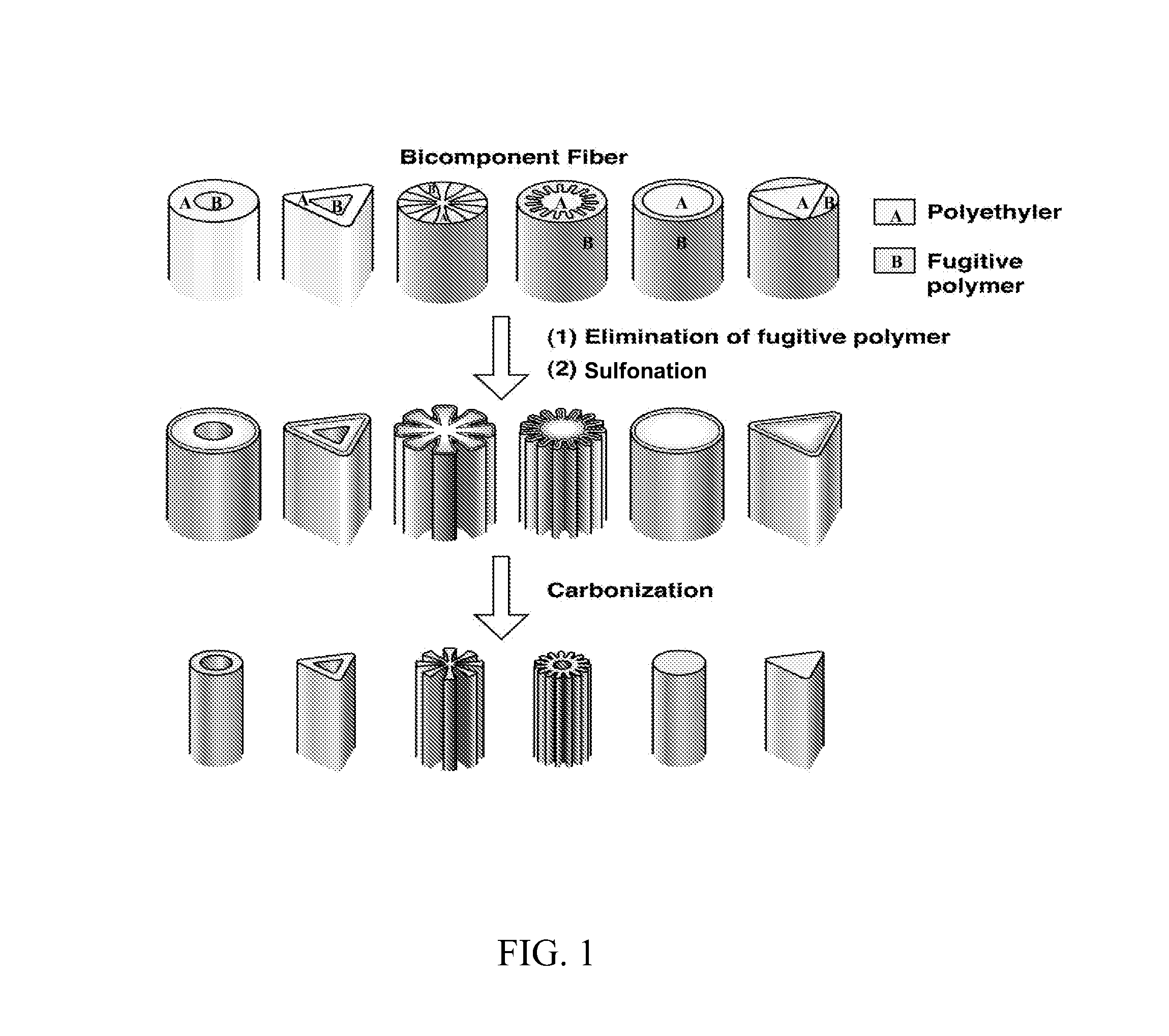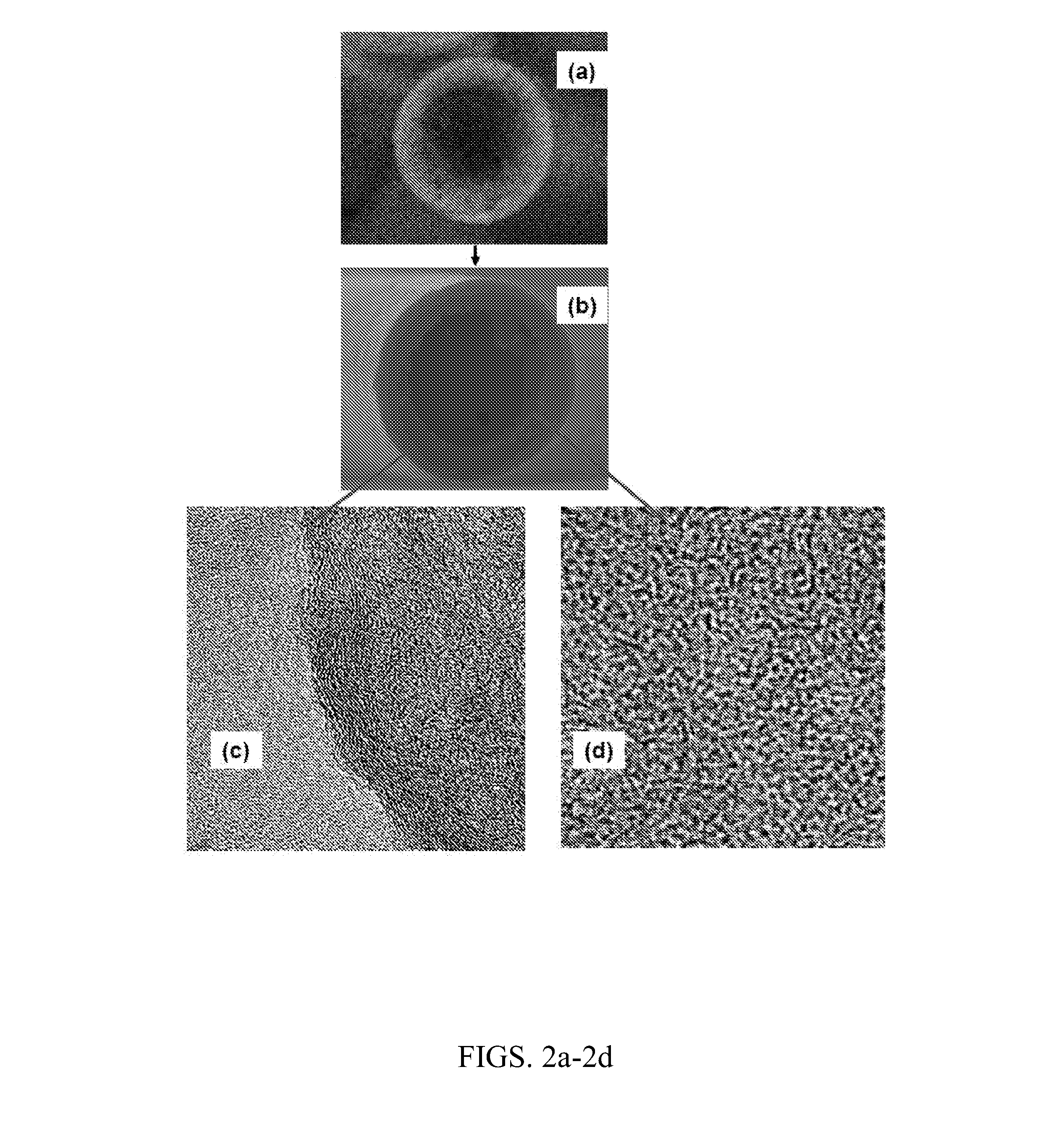Method for the preparation of carbon fiber from polyolefin fiber precursor, and carbon fibers made thereby
a technology of polyolefin fiber and precursor, which is applied in the field of carbon fiber production, can solve the problems of uncontrollable reaction, slow sulfonation process, and least significant drawback of sulfonation degr
- Summary
- Abstract
- Description
- Claims
- Application Information
AI Technical Summary
Benefits of technology
Problems solved by technology
Method used
Image
Examples
example 1
Preparation of Carbon Fibers
Materials
[0063]Linear low-density polyethylene (LLDPE) was spun into fibers with a varied diameter ranging from 1 to 18 μm by conventional melt-spinning using both single and bi-component extrusion processes. For bi-component spinning, polylactic acid resin was used as the second (fugitive) component that is dissolved in a continuous operation using a tetrahydrofuran solvent bath at 50° C. LLDPE fibers with a trilobal cross-section and circular polylactic acid (PLA) core as well as circular PLA fibers with a star- and gear-shaped LLDPE core of varied diameters (1-18 μm) were spun by bi-component extrusion. Depending on the degree of molecular orientation, the LLDPE fibers have a crystallinity of 50-60% and a tensile strength of 100-170 MPa when tested at 25° C. and at 3 mm / min strain rate for 25.4 mm long single filament specimens on a MTS tensile tester. Fuming sulfuric acid containing 18-24% sulfur trioxide (oleum) was used for sulfonation of the fibers...
example 2
Preparation of Carbon Fiber from Partially-Sulfonated Precursors
Materials
[0075]Partially stabilized version of PEIII sample shown in Table 1 with DS <0.4 (mol (sulfonic acid) / mol (LLDPE repeat unit)).
[0076]In one experiment, sulfonated tow was directly heat-treated at 1700° C. for two minutes at no tension. In a second experiment, the sulfonated tow first heat treated at 165° C. for two minutes at a tension of 0.8 mN / filament (˜0.3 Pa), followed by direct high temperature (1700° C.) carbonization as in the first experiment. In third experiment, after 165° C. heat treatment for two minutes, fiber tow was heat-treated sequentially at 200, 600, 1200, and 1700° C. under no tension for two minutes residence time at each step.
Discussion
[0077]FIGS. 7a-7c depict SEM micrographs for carbonized filaments obtained from the foregoing three experiments. Direct heat treatment of partially-sulfonated polyethylene resulted in 100% hollow carbon fiber with average wall thickness of 2-3 mic...
PUM
| Property | Measurement | Unit |
|---|---|---|
| temperature | aaaaa | aaaaa |
| temperature | aaaaa | aaaaa |
| temperature | aaaaa | aaaaa |
Abstract
Description
Claims
Application Information
 Login to View More
Login to View More - R&D
- Intellectual Property
- Life Sciences
- Materials
- Tech Scout
- Unparalleled Data Quality
- Higher Quality Content
- 60% Fewer Hallucinations
Browse by: Latest US Patents, China's latest patents, Technical Efficacy Thesaurus, Application Domain, Technology Topic, Popular Technical Reports.
© 2025 PatSnap. All rights reserved.Legal|Privacy policy|Modern Slavery Act Transparency Statement|Sitemap|About US| Contact US: help@patsnap.com



